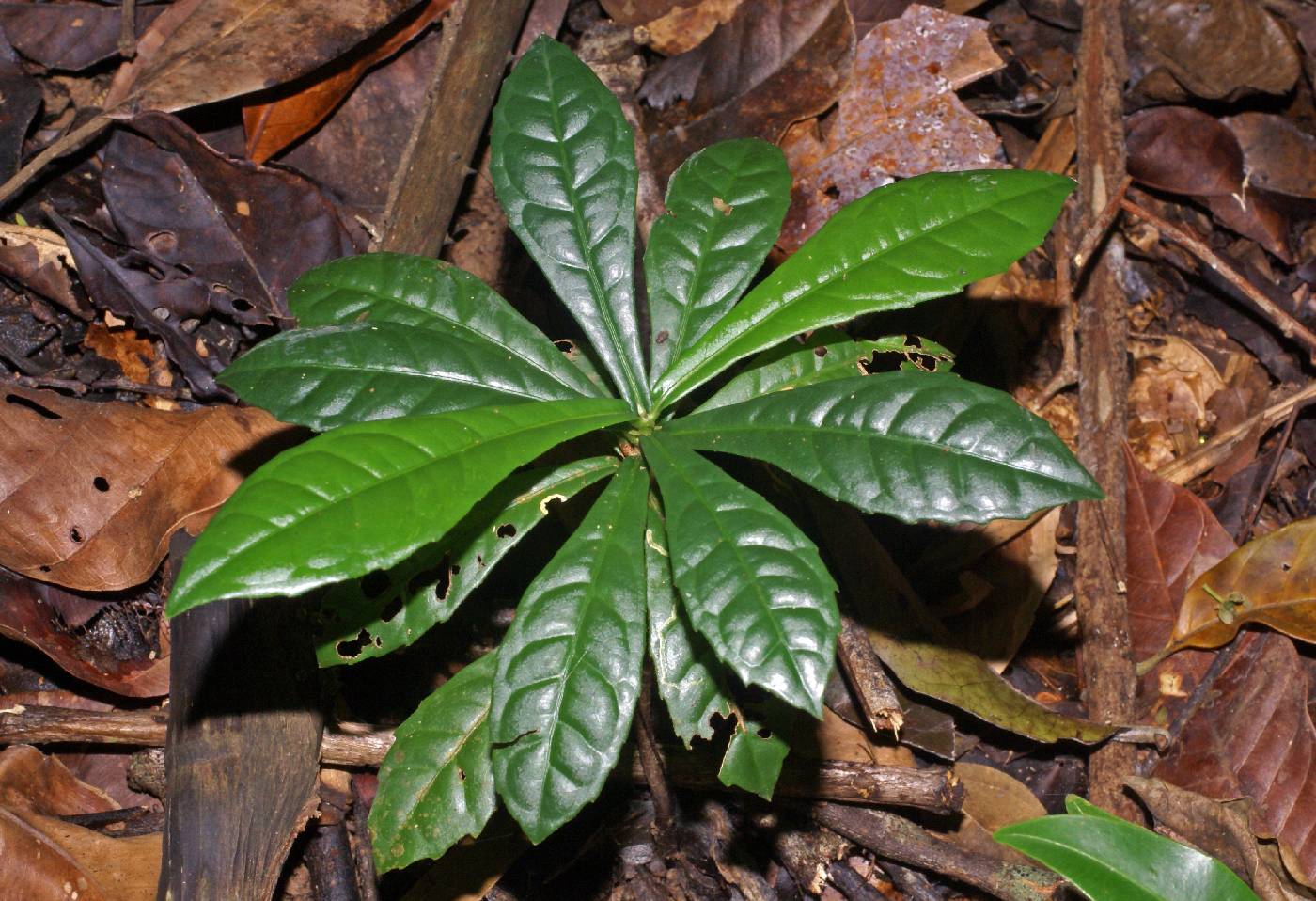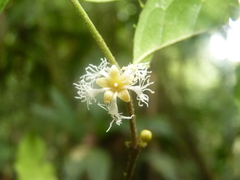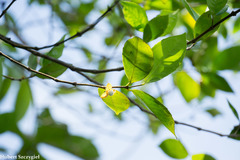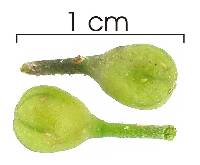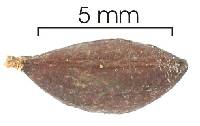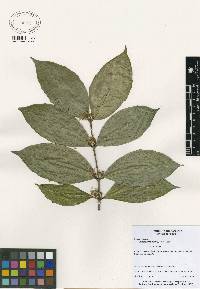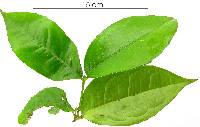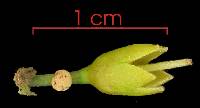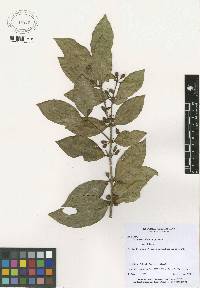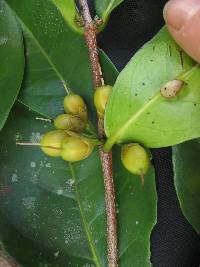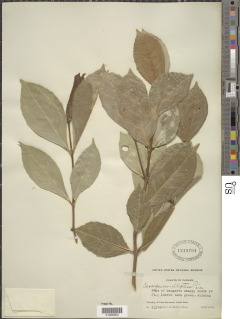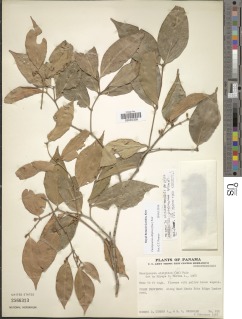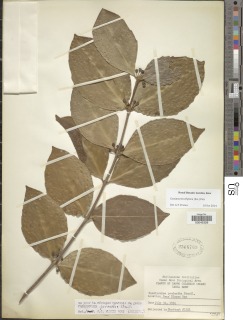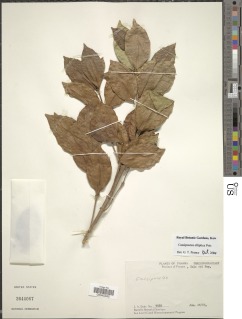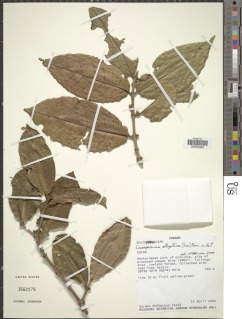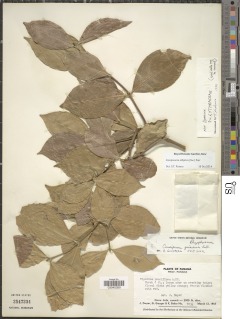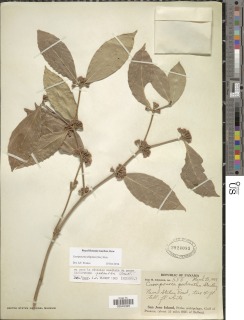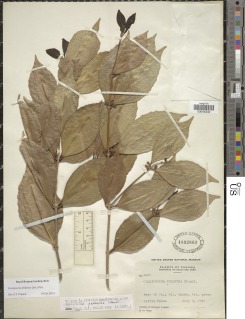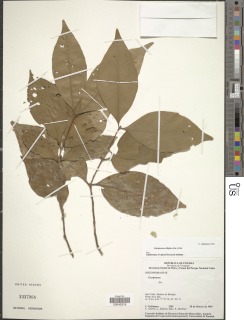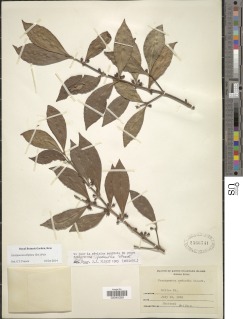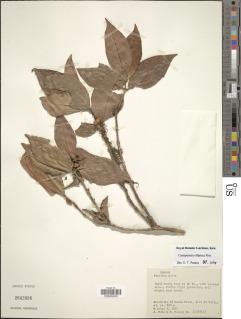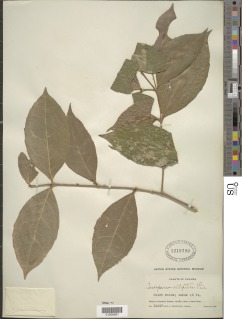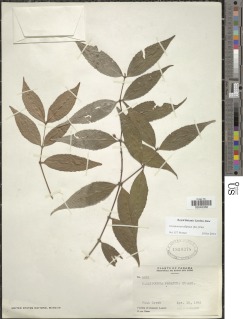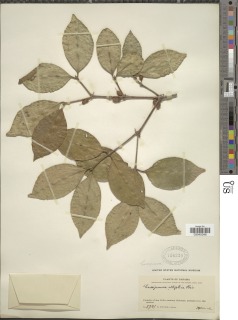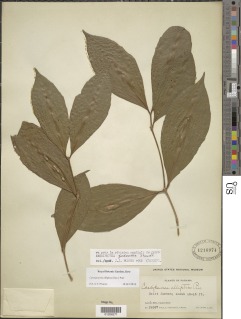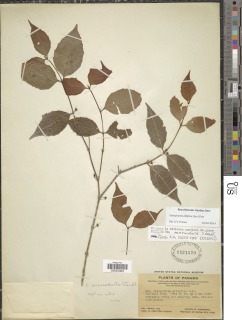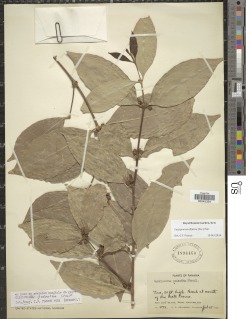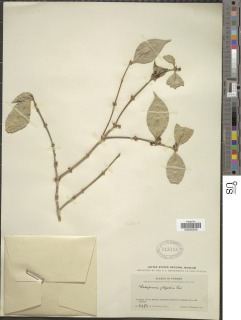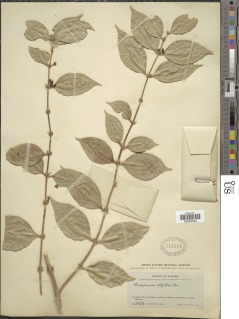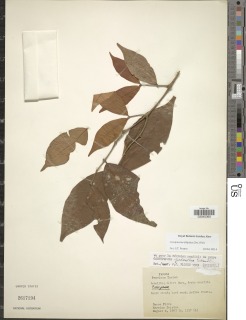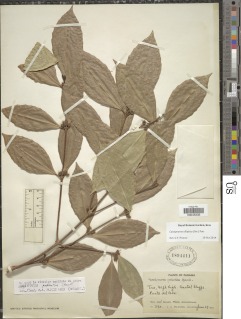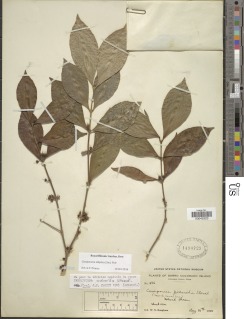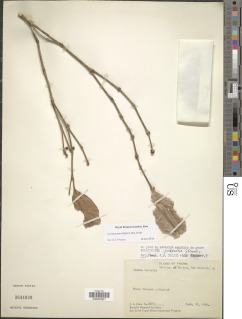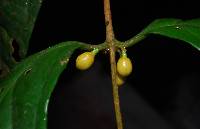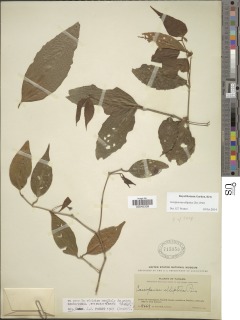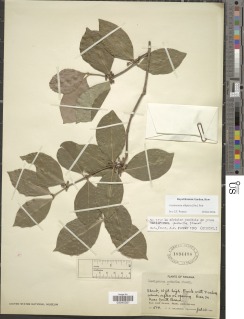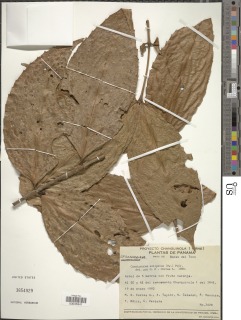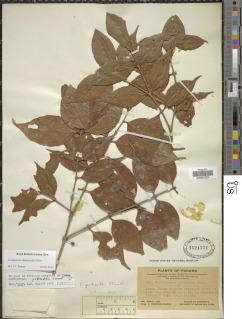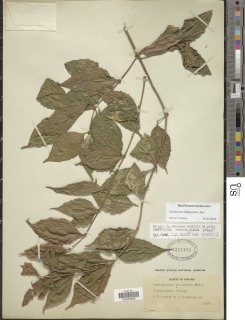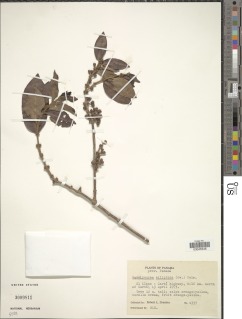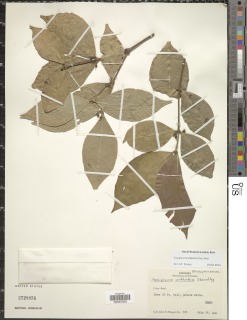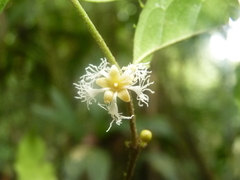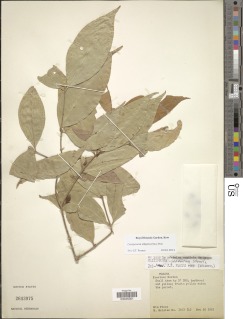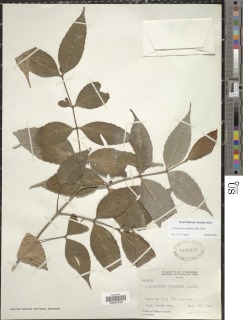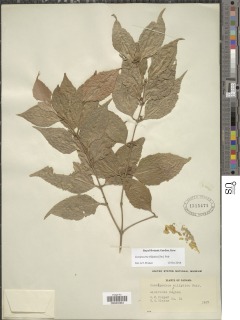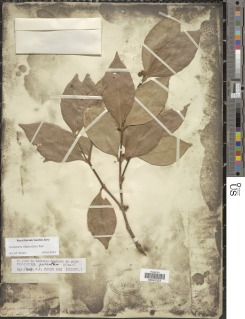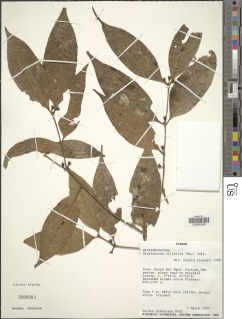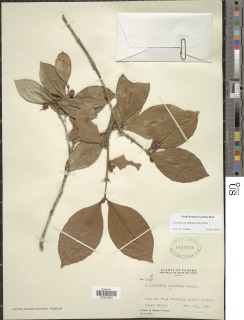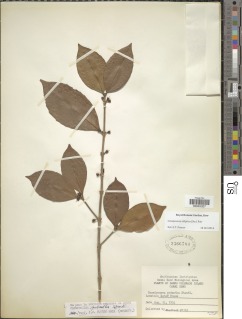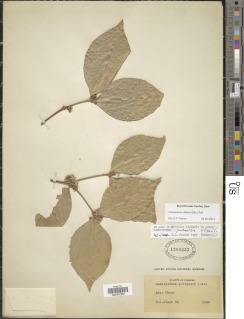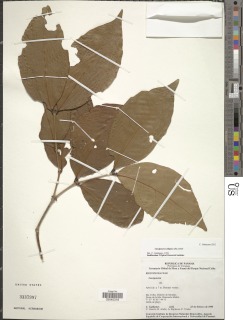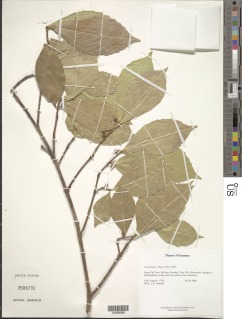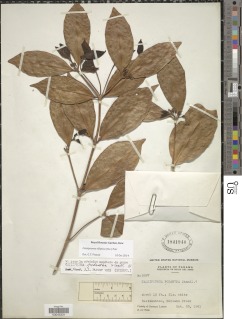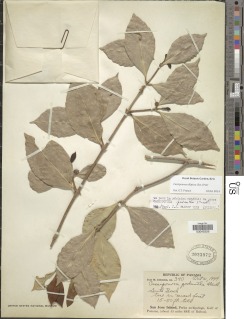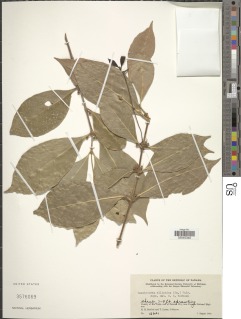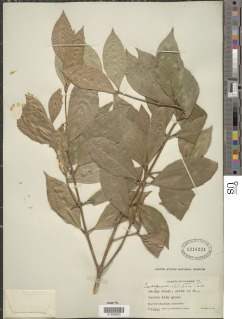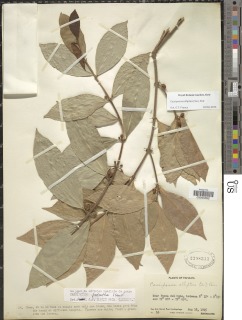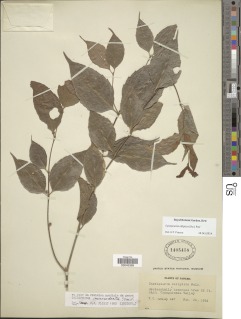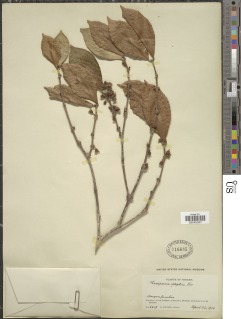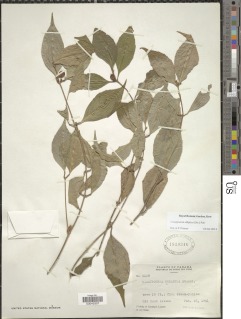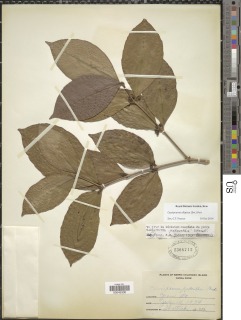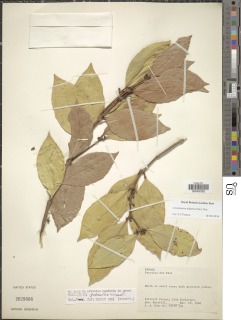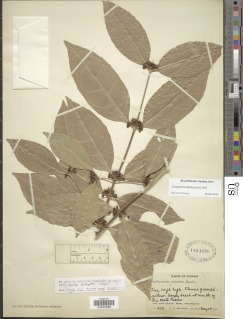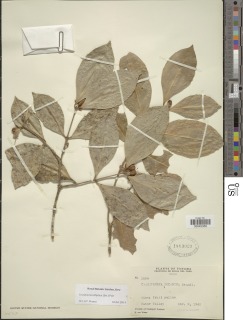

|
|
|
|
Family: Rhizophoraceae
ajo, more...huesito
|
Description: A small or medium-sized tree, just reaching the canopy, with a straight, cylindrical trunk. Branches are opposite one another along the trunk, and leaves are opposite and simple. Branchlets are swollen at leaf nodes, and this shows clearly where leaves have fallen. Leaves are often toothed, but in many cases the teeth are absent or very small. Each secondary vein arches forward to meet the next secondary vein, making a collecting vein near the leaf margin that is evident on the leaf underside. Reproduction: Flowers are greenish-white, produced between April and July in clusters at the leaf nodes. Fruits are small orange capsules which have remnants of the flower's stigma at their tops; mature from August to October. The seeds within have a white aril that attracts birds. Distribution: A very widespread species, occuring throughout the area from dry to wet and low to high elevation. Common at many sites, including Barro Colorado Island, Soberania, Sherman, but also very common at wetter sites such as the Santa Rita ridge and at drier sites near Panama City. Can be common in swampy forests, along with LK pri2co Prioria copaifera. LK2 Not seen along roads or in open areas. Similar Species: Opposite, toothed leaves are unusual, unfortunately, the teeth on this species are sometimes inconspicuous. If you look carefully at many leaf margins, usually at least some will appear vaguely toothed. But if you miss this, opposite leaves without latex will pass for Myrtaceae or maybe Rubiaceae. In Myrtaceae, the collecting vein is usually less arched, but LK eugeco Eugenia coloradensis LK2 especially might be confused with Cassipourea. Rubiaceae always have a stipule between leaf pairs, or an evident scar from the stipule; in Cassipourea the stipules do not cross between leaves. Best to remember to search carefully for teeth on leaf margins in Myrtaceae that look not quite like Myrtaceae. Uses: Like the related mangroves, Cassipourea has hard wood that is used in many kinds of construction, but the tree is too small to be sought after commercially. Descripción: Árbol de 10 a 25 m de alto. Tronco con ramas opuestas. Corteza exterior negra y con lenticelas blancas. Ramitas terminales cilíndricas o ligeramente aplanadas y con cicatrices de las hojas que han caído. Hojas simples y opuestas, de 5-16 x 3-7 cm, ovadas o elípticas, con ápice agudo o acuminado, bordes dentados a veces oscuramente dentados y base decurrente. Las hojas presentan una nervadura submarginal y a veces tienen agallas de insectos. Estípulas axilares. Pecíolo de 0.2-0.5 cm de largo y ligeramente acanalado en la parte superior. Flores blancas en fascículos axilares. Pétalos fimbriados. Frutos en cápsulas ovoides, de 0.8-1.5 cm de largo, con restos del cáliz en la base y remanentes de los estigmas en la punta, verdes, tornándose amarillos o anaranjados y dehiscentes al madurar. Semillas cubiertas por un arilo blanco. Datos Ecológicos: La especie crece a bajas y medianas elevaciones, en bosques húmedos o muy húmedos. En Panamá se encuentra en las provincias de Bocas del Toro, Chiriquí, Coclé, Colón, Darién, Panamá, Veraguas y la comarca de Guna Yala. Crece en áreas pantanosas asociado con LK pri2co Prioria copaifera LK2 (cativo), también con LK camppa Campnosperma panamense LK2 (orey). Florece y fructifica de abril a diciembre. Especies Parecidas: A menudo se confunde con plantas de la familias Rubiaceae, pero las Rubiaceae tienen hojas con bordes enteros y en Cassipourea elliptica los bordes son dentados. También se puede confundir con LK crospa Crossopetalum parviflorum LK2 , pero en C. parviflorum las estípulas no son axilares y los frutos son rojos al madurar. Usos: La madera es empleada en la construcción de puentes, pisos y mangos de herramientas. De las hojas y la corteza se extraen taninos. C. podantha Standl. Huesito, Limoncillo, Goat wood Shrub or tree, to 13 (17) m tall; stems nearly glabrous, +/- roughened with lenticels. Stipules interpetiolar, 4-5 mm long, caducous; petioles 3-10 mm long; blades ovate to elliptic, acute to acuminate at apex, cuneate at base, 5-16 cm long, 2-6.5 cm wide, glabrous, often weakly toothed in apical half. Fascicles upper-axillary; flowers 4- or 5-parted, usually numerous; pedicels 2-5 mm long, articulate beneath flower; calyx campanulate, valvate in bud, thick, to 5 mm long, glabrous outside, sericeous inside, exuding a yellowish sap when cut, persistent and reddish in fruit; petals white, spatulate, thin and laciniate, usually pilose, to ca 7 mm long; stamens 15-25, included, ca 7 mm long; filaments slender, often united at base; anthers to ca 1 mm long, 4-celled (owing to a partition in the thecae); ovary depressed-globose; style to 6.5 mm long, persistent in fruit; style and apex of ovary sericeous; stigma capitate. Capsules elliptic to obovoid, ca 1 cm long, yellowish at maturity, fleshy, glabrous except for few trichomes at apex, splitting into 3 parts to expose seeds; seeds 2 (4), brown, covered with a white, much-folded aril. Croat 5371, 6132. Frequent along the shore on the north side of the island; uncommon in the young forest. Flowers and fruits throughout the year, especially from April to August. Allen (1956) reported the species to be common in mangrove swamps and to flower in May. Frankie, Baker, and Opler (1974) reported the species to be bimodal in its flowering, with some flowers during January and February and some during July and August in Costa Rica; the fruits there mature from July to October. Allen (1956) reported the tree to be as tall as 30 m. The flowers have abundant pollen and seem well suited to pollination by pollen-collecting insects. Bocas Species Database Habitat: Grows together with Natural History Notes: Wood is used in the construction of bridges, industrial floors and railroads. Tannins are extracted from the bark and leaves. Characteristics: Tree that reaches from 10 to 25 m in height. Leaves are simple and opposite, edged borders and submarginal nerves. Flowers are white in color. Fruits turn yellow or orange when ripe. |
|
|
|

